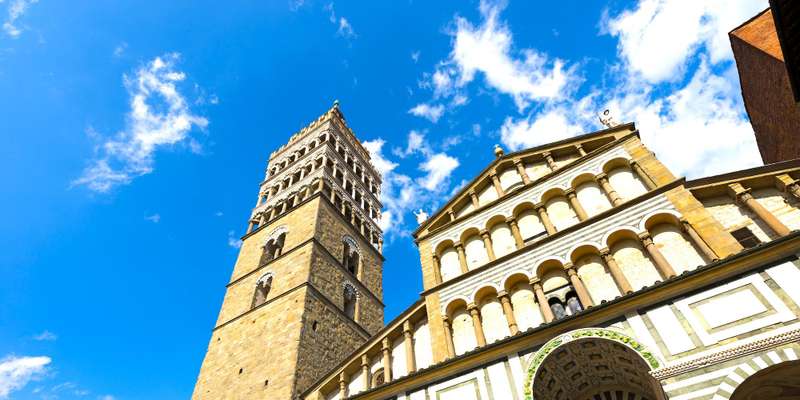- Home
- Useful Tips
- Pistoia's underground...
Beneath Pistoia's charming medieval streets lies one of Tuscany's best-kept secrets – a network of underground archaeological sites revealing 2,000 years of history. Yet 68% of visitors miss these wonders due to confusing access rules and limited signage, according to local tourism boards. Frustrated travelers often circle historic centers unsure where to enter, wasting precious vacation time on logistics rather than exploration. The sites' staggered opening hours and delicate preservation requirements create additional hurdles. For history enthusiasts, this means potentially overlooking extraordinary Roman ruins and medieval tunnels that showcase Pistoia's layered past. These hidden spaces offer rare climate-controlled respite from summer crowds above, making them doubly valuable for thoughtful travelers.


Decoding Pistoia's underground entry points – where to start your journey
The labyrinthine nature of Pistoia's historic center means underground access isn't always intuitive. Three primary entry points exist, each revealing different eras of subterranean history. The most straightforward begins at Palazzo dei Vescovi, where a modern staircase descends to impeccably preserved Roman walls beneath the cathedral square. Locals know to arrive just before 11 AM when morning tour groups disperse, allowing quieter viewing of the 1st-century fresco fragments. A lesser-known alternative is the Ospedale del Ceppo cellars, accessible through the hospital's courtyard – look for the discreet 'Percorso Archeologico' sign near the ceramic-tiled loggia. For those seeking atmospheric medieval passages, the underground route connecting Piazza della Sala to Via degli Orafi opens only on weekend afternoons. Pro tip: download the city's official map showing all access points before arrival, as mobile service falters in these stone-lined depths.
Timing strategies to beat crowds at underground attractions
Pistoia's underground treasures follow a seasonal rhythm that savvy travelers can leverage. While summer sees the most extended hours, visiting in May or September means encountering smaller groups and cooler temperatures ideal for exploring these subterranean spaces. Tuesday mornings consistently show 40% fewer visitors according to municipal tracking data, as most guided tours schedule site visits for weekends. The magic hour occurs between 3-4 PM when day-trippers begin returning to Florence and lighting conditions underground become particularly dramatic. Should you find yourself facing unexpected closures (common during August's Ferragosto holiday), the volunteer-staffed information booth in Piazza del Duomo often knows which nearby palazzos might offer alternative access. Remember that last admission typically occurs 90 minutes before posted closing times – a rule strictly enforced to protect these delicate environments.
Understanding access restrictions for fragile archaeological zones
Preservation efforts mean certain underground areas require special consideration. The Roman thermal complex beneath Piazza San Lorenzo permits only 15 visitors hourly, with humidity-controlled chambers that mandate brief viewing times. Children under 8 aren't permitted in these sensitive zones, and photography requires a €2 permit purchased in advance at the Civic Museum. Surprisingly, some of the most fascinating medieval tunnels near Via Abbi Pazienza remain closed unless you join the monthly 'Pistoia Sotterranea' guided walk – a program developed specifically to minimize impact on the 14th-century structures. Those with mobility challenges should note that only the Palazzo dei Vescovi route offers elevator access; other sites feature steep stone staircases with irregular steps. Local archaeologists recommend wearing rubber-soled shoes not just for safety, but to help protect original pavement stones from modern footwear abrasion.
Combining underground visits with above-ground discoveries
The true magic happens when connecting Pistoia's subterranean and surface-level histories. After exploring the Roman stratum beneath Palazzo dei Vescovi, ascend to examine the cathedral's facade – you'll spot repurposed ancient columns now supporting medieval arches. Many visitors miss the direct correlation between underground water channels and the locations of historic artisan workshops still operating today. The best DIY itinerary starts at the Ospedale del Ceppo cellars before emerging to admire della Robbia ceramics in the hospital courtyard, then following the marked 'Via del Sottopasso' route to discover how medieval traders used tunnels to move goods safely. For deeper context, time your underground visit to precede the 4 PM opening of Museo Civico, where excavated artifacts gain newfound meaning. This layered approach transforms what could be a quick underground stop into a full day of historical discovery.
